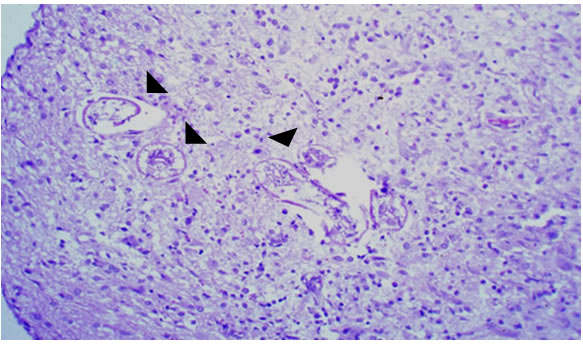Etiology: Infection of rabbits occurs with the raccoon ascarid, Baylisascaris procyonis.
Transmission: Transmission occurs by ingestion of bedding or hay contaminated with raccoon feces.
Incidence: Incidence of infection is uncommon in laboratory rabbits.
Clinical Signs: Clinically infected rabbits display torticollis, ataxia, tremors, and falling (loss of balance).
Pathology: At necropsy, multiple white, raised nodules in the epicardium, endocardium, and serosal surface of the liver may be seen. Larval granulomas and multifocal necrosis in the cerebrum and cerebellum and larval granulomas and tracks in the viscera are typical histologic lesions. Cross sections of larvae with cuticular alae are often visualized in brain sections.
Diagnosis: Diagnosis is made from clinical signs and the presence of larvae in histology sections (arrowheads).
Public Health Significance: Young children may experience severe and even fatal disease as a result of infection with Baylisascaris procyoni [4].

4. Park, S.Y., et al., Raccoon roundworm (Baylisascaris procyonis) encephalitis: case report and field investigation. Pediatrics, 2000. 106(4): p. E56.